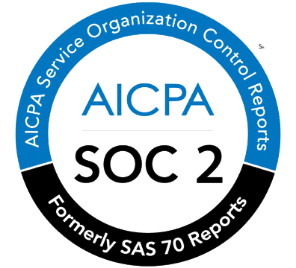Estate Tax Planning Software and More: How to Build a Modern Tech Stack for All Your Client's Needs

In today’s fast-paced, tech-driven world, financial planning firms must stay ahead of the curve to effectively meet their clients’ ever-evolving needs.
Today’s clients are looking for financial advisors who can provide them with a wealth of financial tools that will help them understand and address their current needs as well as plan for their long-term goals.
These clients want clarity, confidence, and control over their financial future, and they seek advisors who offer personalized strategies backed by modern technology.
What does this mean for your financial firm?
Building a modern tech stack will be an instrumental part of your long-term success.
- Financial advisors rely on a suite of software to manage and analyze client relationships, portfolios, trades, and investment data.
- Platforms like tax and estate planning software enable advisors to present complex financial scenarios in visually engaging ways, fostering deeper client understanding and collaboration.
- Take some time and research the various types of financial planning software you need in order to create the type of financial practice you want.
- CRM: Where Client Relationships Begin
- Financial Planning Tools: Where the Basics Begin
- Portfolio Management Software: Organization Starts Here
- Trading and Rebalancing Platforms: Streamlining and Optimizing When Needed
- Document Management Software: The Key to Efficiency
- Estate and Tax Planning Software: Preparing for the Future
- The Final Product: How to Build Your Ideal Financial Planning Tech Stack
- Holistiplan: Award-Winning Tax and Estate Planning Software for the Modern-Day Financial Firm
Financial planners are tasked with managing complex portfolios, providing estate and tax planning advice, creating customized financial strategies, and maintaining impeccable business operations.
To achieve all of these various applications, a firm needs robust, reliable software tools that streamline processes, enhance productivity, and improve client experiences.
Here is an in-depth exploration of the essential software categories that you should include in your firm’s modern tech stack to create a comprehensive approach to all your clients’ personal financial goals.
CRM: Where Client Relationships Begin
CRM (Client Relationship Management) is the foundation of any successful financial planning business.
A CRM system serves as a centralized hub for managing all aspects of client interactions, including contact information, communication history, preferences, and key financial milestones.

By organizing and automating these elements, CRM software enables financial advisors to build stronger relationships, provide personalized service, and respond proactively to client needs.
Why It’s Important:
With a robust CRM system, advisors can keep track of important client conversations and details like financial goals and investment updates to enhance engagement and foster trust. It also streamlines processes such as appointment scheduling, task management, and follow-up reminders, ensuring no client interaction slips through the cracks.
Ultimately, a CRM is not just a tool—it’s a strategic advantage that helps advisors deliver exceptional service and create lasting connections.
Efficiency Meets Value in Financial Planning
Holistiplan bridges the gap between speed and quality, helping advisors like you deliver greater value to every client
Financial Planning Tools: Where the Basics Begin
Financial planning tools will be key for creating the start of a solid financial strategy for your clients, no matter where they are in their journey.

These tools encompass a range of features that help financial advisors assess, project, and strategize around their clients’ financial goals.
From budgeting software to retirement planning calculators, financial planning tools simplify complex data and make it easier to design personalized plans for every stage of a client’s financial journey.
Why It’s Important:
These tools are invaluable for analyzing different scenarios, forecasting outcomes, and identifying potential gaps in a client’s current plan. Whether it’s preparing for retirement, saving for education, or achieving long-term investment goals, financial planning tools provide the foundational insights that advisors need to make informed recommendations.
By leveraging these tools, financial planners can turn intricate financial data into clear, actionable steps, ensuring clients feel confident and prepared for their financial future.
Portfolio Management Software: Organization Starts Here

Portfolio management software is an essential tool for financial advisors, allowing them to efficiently track, analyze, and optimize their clients’ investment portfolios.
These platforms offer features such as asset allocation analysis, performance monitoring, and risk assessment, ensuring portfolios stay aligned with clients’ goals and preferences.
Why It’s Important:
By centralizing portfolio data in one place, this software enables advisors to organize investments across multiple accounts, identify underperforming assets, and adjust strategies in real time. With visual dashboards and reporting tools, advisors can present portfolio updates in a clear and engaging manner, helping clients understand their progress and make informed decisions.
Trading and Rebalancing Platforms: Streamlining and Optimizing When Needed
Trading and rebalancing platforms are vital tools for financial planners looking to manage their clients’ investment portfolios efficiently and effectively.
These platforms provide the functionality to execute trades, rebalance portfolios, and maintain alignment with an investor’s long-term goals, all while reducing manual labor and minimizing errors.

Why It’s Important:
Over time, market fluctuations can cause portfolios to drift away from their intended asset allocation.
For instance, a booming stock market might inflate the equity portion of a portfolio, increasing its risk beyond the client’s desired tolerance. Conversely, bonds might underperform, leaving the portfolio unbalanced.
Regular rebalancing helps maintain the appropriate mix of assets, ensuring that the portfolio stays aligned with the client’s risk preferences and investment objectives.
Elevate Your Practice with Holistiplan
Holistiplan is trusted by thousands of advisors to deliver faster, more valuable financial plans. Start your free 7-day trial and see the difference for yourself
Get Started TodayDocument Management Software: The Key to Efficiency
Drafting documents is one thing that’s usually on a financial planner’s plate. Knowing how to store and organize them effectively is another.

Document management software is designed to securely organize, store, and retrieve important client documents.
From estate planning documents and legal documents to tax forms and distribution statements, documentation software will ensure that all sensitive information is easily accessible without compromising security.
Why It’s Important:
Financial planning involves handling extensive documentation, including investment contracts, wills, tax returns, and compliance reports. Keeping these documents organized is essential for both operational efficiency and legal compliance.
Document management software provides encryption, version control, and cloud storage capabilities to protect client data while ensuring instant access when needed. These tools also facilitate collaboration, allowing planners to share files securely with clients or team members.
Estate and Tax Planning Software: Preparing for the Future
Estate and tax planning software is the cornerstone of any financial plan that is truly holistic and forward-thinking.
This type of software makes it easy for financial advisors to navigate complex tax regulations and estate laws to design effective strategies for their clients.
These tools provide features such as tax forecasting, estate valuation, and legacy planning.

Why It’s Important:
Estate and tax planning software simplifies the process of calculating tax liabilities, determining optimal estate structures, and projecting long-term financial outcomes for heirs and beneficiaries.
It allows planners to provide personalized solutions that minimize tax burdens while ensuring clients’ wealth is preserved for future generations. Additionally, the automation of calculations and compliance checks saves time and reduces the risk of errors in complex planning scenarios.
The Final Product: How to Build Your Ideal Financial Planning Tech Stack
When constructing your tech stack, it’s important to consider the unique needs of your firm and your clients.
Here are some ways to do this:

Assess Your Requirements:
Determine which areas of your business need the most support, whether it’s client relationship management, portfolio optimization, or accounting.

Prioritize Integration:
Choose software tools that integrate well with each other to ensure smooth workflows and data sharing across platforms.

Scalability:
Opt for software solutions that can scale with your business as it grows, accommodating additional clients, services, and team members.

User-Friendly Features:
Look for tools with intuitive interfaces and reliable customer support to minimize learning curves and maximize efficiency.

Security and Compliance:
Ensure that all software solutions meet industry standards for data security and compliance to protect sensitive client information.
Remember: your ideal financial planning tech stack should align with your firm’s goals while also streamlining certain processes and elevating the experience you offer your clients.
By investing in a strategic and adaptable suite of tools, your firm is well-positioned to thrive in today’s dynamic financial landscape.
Holistiplan: Award-Winning Tax and Estate Planning Software for the Modern-Day Financial Firm
Building a modern tech stack for your financial planning firm is an investment in each client’s satisfaction and your firm’s success.
Make that investment worthwhile with software like Holistiplan.
Holistiplan is an industry leader when it comes to estate and tax planning. Whether it’s helping you optimize tax-efficient withdrawals, or create personalized charitable giving strategies, Holistiplan has been able to already help over 30,000 tax professionals and financial professionals with breakthrough tools to serve their clients effectively.

And our numbers just keep growing!
By synthesizing financial documents and mapping opportunities for growth, Holistiplan software streamlines complex estate and tax planning processes, ensuring accurate and impactful results.
Invest in the software that simplifies estate and tax planning, allowing you to focus on what truly matters—helping your clients’ financial futures flourish.
Holistiplan is the foundation of innovation and success for your firm.
Built by CFP® Professionals,
for CFP® Professionals
Holistiplan was designed by experienced advisors Roger and Kevin to streamline your financial planning process. Achieve more for your clients in less time
Start Your Free 7-Day Trial



